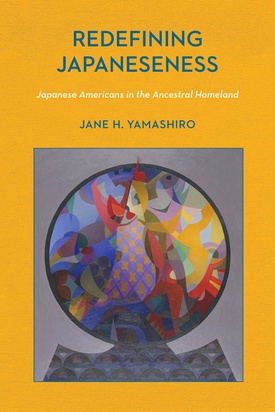In spite of being involved in researching and writing about Japanese American history for 45 years, I have only been to Japan once, and then for but a week in the Tokyo-Yokohama area. My purpose was to participate in a conference of the Japan Oral History Association. I was accompanied to this gathering at Tokyo’s Rikkyo University by a Japan-born, U.S.-educated colleague at the Japanese American National Museum; she had served an extended professorship at a Japanese university and was a notable specialist in both Japanese and Japanese American history.
Throughout the conference, I was chaperoned to dinners, cultural institutions, and sporting events by a coterie of distinguished conferees, all either Japanese Americans who were longtime Japan residents or Japanese nationals who had lived and/or worked at length in the United States.
I also interacted with a number of Japanese American conferees who claimed variable degrees of familiarity with Japan and its language and customs. Furthermore, they looked quite like their Japanese counterparts. For the most part, too, they had been born and raised on the U.S. West Coast, but to a lesser extent as well in the country’s interior region, on the East Coast, and in Hawai‘i.
Had Redefining Japaneseness been available in 2004 to these conferees, it likely would have been somewhat helpful to them in negotiating even their brief sojourn to their “ancestral homeland.” But its value to me would have been chiefly academic, since I am not of Japanese descent, bear no resemblance in appearance to Japan’s predominant population, neither speak Japanese nor understand it whatsoever, and have but a rudimentary grasp on Japanese mores and manners. Still, being made aware in Redefining Japaneseness that my situation as a white, English-speaking American professor could probably facilitate my reception in Japanese society assuredly would have been useful knowledge for me to acquire.
The working premise of sociologist Jane Yamashiro’s luminous book is that Japanese Americans in Japan “complicate” the binary (that is, duality) of “Japanese” and “Foreigner” (whereas someone like me does not, since I am so manifestly a member of the “Foreigner” category). To better understand this premise and its implications before even reading Yamashiro’s remarkably enlightening and engaging volume, it would be a wise idea to view her Rutgers University Press-sponsored Youtube posting. For therein, Yamashiro addresses such significant questions as: 1) How do Japanese Americans complicate the binary of “Japanese” (Nihojin) and “Foreigner” (Gaijin) in Japan? 2) How do Japanese Americans living in Japan vary and does this change their experience?” and 3) What is the difference between a Japanese American from Hawai’i and a Japanese American from the continental U.S. in Japan?
Yamashiro is eminently qualified to address these questions and related ones. A Sansei-Yonsei raised in San Francisco, she is highly proficient in the Japanese language, as spoken within multiple areas in Japan, where she has lived for protracted periods as a student, researcher, and university professor; she has also lived in Hawai‘i, where she received her advanced degrees at the University of Hawai‘i, and the southern California cities of San Diego, where she did her undergraduate studies at the University of California, San Diego, and Los Angeles, where she has served as a visiting scholar at USC and UCLA as well as being a Loyola Marymount University teaching fellow.
More pertinently, between 2004 and 2009 she conducted for her book more than 50 tape-recorded formal interviews, and many more informal ones, with long-term residents of Tokyo, her cosmopolitan study site. Mostly her informants were “lawyers, businesspeople, and other highly educated white-collar workers” (pp. 158), but Yamashiro also interviewed a complement of exchange students and teachers whose stay in Tokyo was of at least one-year duration. In addition, in the decade spanning 2005 and 2015 she conducted 32 more formal interviews, plus countless off-the-record ones, with Japanese Americans who were living in the United States after having returned from Japan. Seven of these interviews were follow-ups of ones done by her previously in Tokyo, with two of them being transacted in Honolulu. For the edification of readers, Yamashiro provides a useful appendix that lists all of her project’s formal interviewees, who overwhelmingly are assigned pseudonyms to protect their privacy.
So what, then, is the yield from Yamashiro’s prodigious and meticulous ethnographic fieldwork? It is twofold. On the one hand, as a scholarly treatise, Redefining Japaneseness breaks new and important ground in sociology, Asian studies, and Asian American studies, specifically with regards to extending and illuminating the global phenomena of transnational and ethnic identity construction. On the other hand, to quote the author, “by studying ancestral homeland migration experiences in Japan and showing how they come to redefine Japaneseness through encounters in Japanese society, we gain a better understanding of . . . what it means to be Japanese in Japan” (pp. 156).
My guess is that while scholars will applaud the first yield of Yamashiro’s study, it is the second one that will most command the attention of Discover Nikkei readers, especially those Nikkei who have already endured the complex process of negotiating their ancestral identity as residents of Japan and those who are planning to do so in the future and feel the pressing need and strong desire for a reliable guidebook to ease the burden of their journey of discovery.
REDEFINING JAPANESENESS: JAPANESE AMERICANS IN THE ANCESTRAL HOMELAND
By Jane H. Yamashiro
(New Brunswick, NJ: Rutgers University Press, 2017, 224 pp., $27.95, paperback)
*This article was originally published on Nichi Bei Weekly, on July 20, 2017.
© 2017 Arthur A. Hansen / Nichi Bei Weekly








